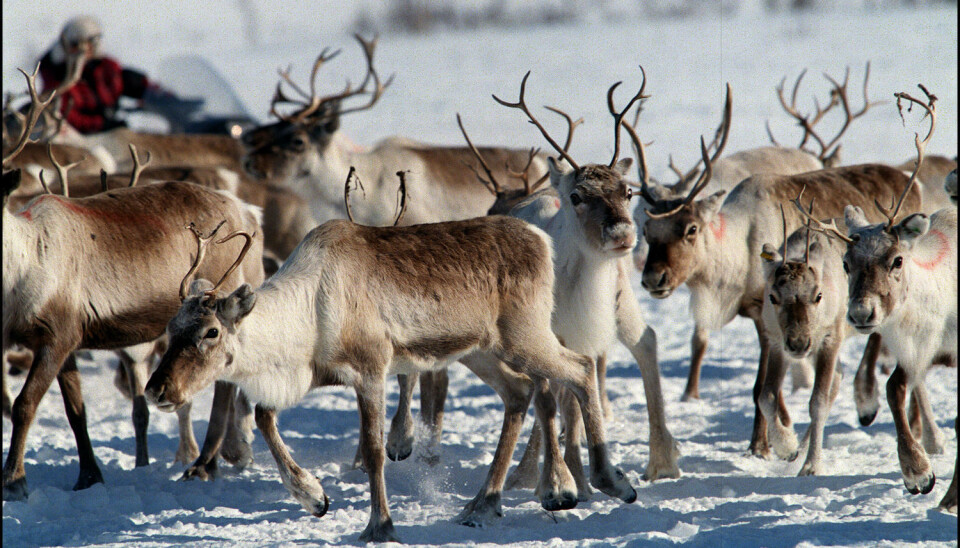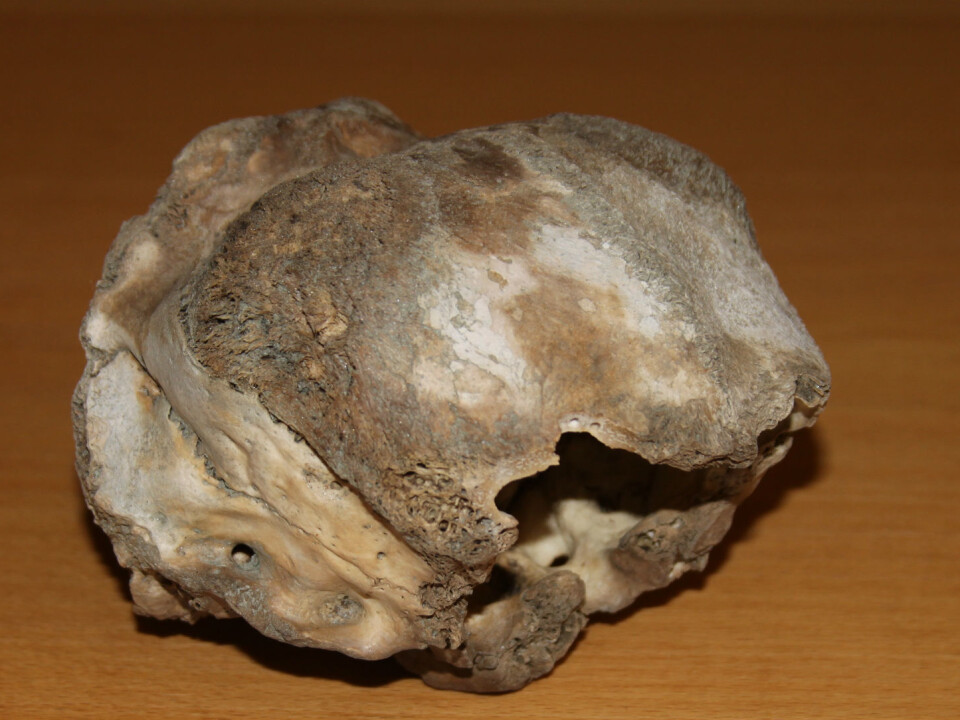An article from Norwegian SciTech News at NTNU

Where did Norway’s reindeer come from?
With the help of well-preserved archaeological material, the researchers hope they will get some answers.
Denne artikkelen er over ti år gammel og kan inneholde utdatert informasjon.
“We know little about how reindeer came to Scandinavia,” says Jørgen Rosvold, who is a postdoctoral fellow at the University Museum at the Norwegian University of Science and Technology (NTNU).
Rosvold is among those who want to learn more about the history of one of Scandinavia’s most iconic animals. There are several theories about how the animal came to Norway.
The reindeer was found throughout Europe during the last Ice Age and may have wandered in through Denmark from the south or through Russia from the east, or both. It has also been suggested that reindeer could have walked into Norway across the sea ice from an area now flooded by the North Sea.
Another mystifying question concerns the origins of domesticated reindeer.
Genetic traces

Genetically, caribou and reindeer are very similar, but there are still characteristics, called genetic markers, which make for differences that researchers can identify in the various populations. Populations in this context are considered to be more or less geographically separated groups.
These differences help researchers as they try to determine the reindeer’s origin and history. Researchers have long wondered whether domesticated reindeer were introduced from the east, or if they were domesticated in several areas, including in Scandinavia. Recent studies indicate that Norway’s domesticated reindeers have their origins in local wild reindeer populations. But the area where this original wild stock came from has yet to be found.
There are leads, however. With luck, well-preserved archaeological material from thousands of years ago can also provide genetic information. Reindeer bones are found in many ancient settlements and hunting areas, while reindeer bones were also used in various household items and weapons.
By examining bones from different places and from different times, it is possible to create a map of how widespread the different genetic markers have been at different locations at any time. That allows researchers to trace how different genetic variants have spread.
Extending the search
Researchers have previously examined the genetic composition of reindeer remains discovered by archaeologist from Finnmark and from different mountain areas in southern Norway, without finding traces of the reindeer population that was the origin of today’s domesticated reindeer. But little is currently known about the ancient populations in the central parts of Scandinavia.
Researchers will thus extend their search this summer to Hattfjelldal and Børgefjell, two mountain areas in north-central Norway. Their goal is to examine permanent snowfields in the area to see if they contain traces of the ancient reindeer population that once lived there.
Reindeer tend to cluster near these permanent snowfields on hot summer days when they are being plagued by biting insects. Hunters have known this for millennia, which means these snowfields are also ancestral hunting grounds, since the snowfields may have been in the same location for thousand of years. The snow helps to preserve bones and other animal relics, and the DNA from these finds is often very well preserved even after several thousand years.
“We have found the remains of wolverines, arctic foxes, house pets, rodents and different kinds of birds in similar permanent snowfields in the Oppdal mountains. But the bulk of what we find is reindeer. The finds extend over a long period, with the oldest a bone from a reindeer that was more than 4,000 years old,” says Rosvold.
Not all permanent snowfields contain suitable material, so the researchers’ efforts are a bit like a treasure hunt. But these permanent snowdrifts also have great potential to answer remaining questions regarding the reindeer’s history. The goal is to partner with the South Sámi Museum and Cultural Centre, the Sámi parliament and local residents to locate the most suitable areas and then conduct a field survey in late summer.
“If we find good material, it opens the possibility of studying population dynamics over long time periods, and the relationship between wild reindeer and domesticated reindeer. It can also provide us a unique opportunity to study the effects of domestication and selection on reindeer, which may also be important in relation to the management of existing wild populations, many of which originate from domesticated reindeer,” says Rosvold.
Almost died out
Wild reindeer in Scandinavia almost died out because of high hunting pressure and intensive reindeer husbandry. By the early 1900s, only a few groups of wild reindeer were left in southern Norway.
Only two of Norway’s remaining reindeer populations, or geographically distinct groups, have genes that are mostly from wild reindeer, according to a DNA analysis conducted by Rosvold in conjunction with Knut H. Roed and other researchers from the Norwegian University of Life Sciences (NMBU). These herds are found in the Dovre and Rondane mountains, in central Norway. This also means that the famous herds in Hardangervidda National Park are genetically more similar to domesticated reindeer.






























